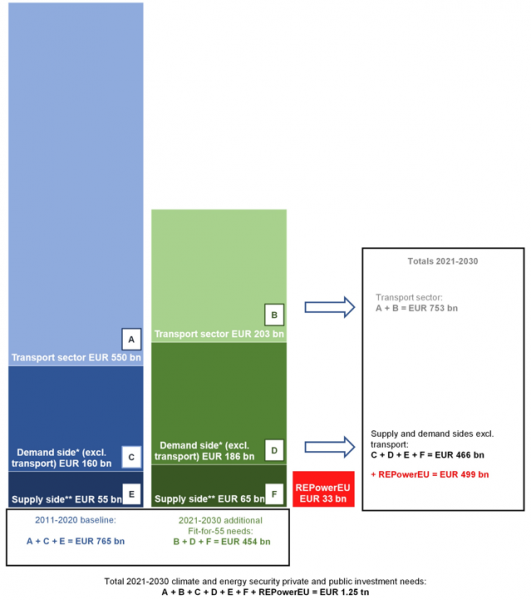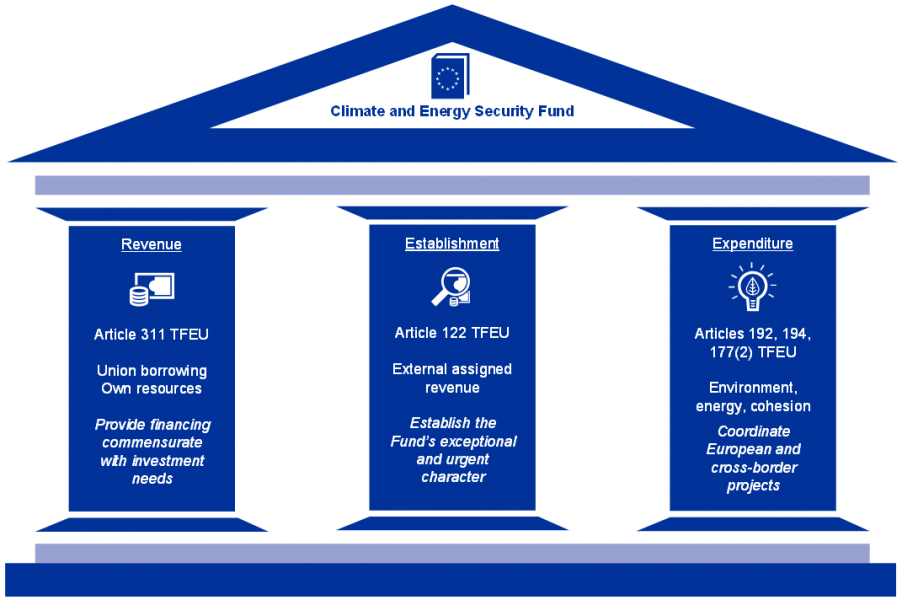References
Abraham, L., O’Connell, M., Arruga Oleaga, I. (2023), The legal and institutional feasibility of an EU Climate and Energy Security Fund, ECB Occasional Paper Series, No 313.
Arnold, N., Balakrishnan, R., Barkbu, B., Davoodi, H., Lagerborg, A., Lam, W., Medas, P., Otten, J., Rabier, L., Roehler, C., Shahmoradi, A., Spector, M., Weber, S. and Zettelmeyer, J. (2022), “The EU Fiscal Framework: Strengthening the Fiscal Rules and Institutions”, IMF Departmental Paper, 5 September.
Buti, M. and Papaconstantinou, G. (2022), European public goods: How we can supply more, VoxEU Column, 31 January.
Calliess, C. (2021), Public goods in the debate on the distribution of competences in the EU, Bertelsmann Stiftung, Cologne.
Council Legal Services (2020), Opinion of the Legal Services on the proposals on Next Generation EU, Brussels.
Delgado-Téllez, M, Ferdinandusse, M. and Nerlich, C. (2022), “Fiscal policies to mitigate climate change in the euro area”, Economic Bulletin, Issue 6, ECB.
De Witte, B. (2021), “The innovative European response to COVID-19: decline of differentiated integration and reinvention of cohesion policy”, ECB Legal Conference 2021, Continuity and change – how the challenges of today prepare the ground for tomorrow, Publications Office of the European Union, Luxembourg, pp. 394-402.
Egli, F et al. (2022), “Financing the energy transition: four insights and avenues for future research”, Environmental Research Letters, Vol. 17, No 5, 10 May.
Fabbrini, F. (2022), “Next Generation EU: Legal Structure and Constitutional Consequences”, Cambridge Yearbook of European Legal Studies, Vol. 23, pp. 1-22.
Ferdinandusse, M., Nerlich, C. and Osterloh, S. (2022), “Can green golden rules help to close the green investment gap?”, Box 3 in Delgado-Téllez, M., Ferdinandusse, M. and Nerlich, C. (2022), “Fiscal policies to mitigate climate change in the euro area”, Economic Bulletin, Issue 6, ECB.
Feyen, L., Ciscar, J.C., Gosling, S., Ibarreta, D. and Soria, A. (2020), Climate change impacts and adaptation in Europe, JRC PESETA IV final report, Publications Office of the European Union, Luxembourg.
Gagliardi, N., Arevalo, P. and Pamies, S. (2022), “The Fiscal Impact of Extreme Weather and Climate Events: Evidence for EU Countries”, Discussion Paper, No 168, European Commission, Brussels.
Garicano, L. (2022), Combining environmental and fiscal sustainability: A new climate facility, an expenditure rule, and an independent fiscal agency, VoxEU Column, 14 January.
Heimberger, P., Lichtenberger, A. (2023), “RRF 2.0:A Permanent EU Investment Fund in the Context of the Energy Crisis, Climate Change and EU Fiscal Rules”, Policy Notes and Reports, Vienna Institute for International Economic Studies, January
Panetta, F. (2022a), Europe’s shared destiny, economics and the law, Lectio Magistralis on the occasion of the conferral of an honorary degree in Law by the University of Cassino and Southern Lazio, 6 April.
Panetta, F. (2022b), Greener and cheaper: could the transition away from fossil fuels generate a divine coincidence?, speech at the Italian Banking Association, Rome, 16 November.
Schnabel, I. (2020), When markets fail – the need for collective action in tackling climate change, speech at the European Sustainable Finance Summit, Frankfurt am Main, 28 September.
Schnabel, I. (2023), Monetary policy tightening and the green transition, speech at the International Symposium on Central Bank Independence, Sveriges Riksbank, Stockholm, 10 February.
Setzer, J. and Higham, C., (2022), Global trends in climate litigation: 2022 snapshot, LSE Grantham Research Institute on Climate Change and Environment, London.
Thöne, M. and Kreuter, H. (2021), Public Goods in a Federal Europe, Bertelsmann Stiftung, Cologne.







